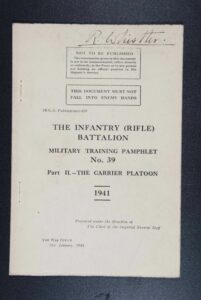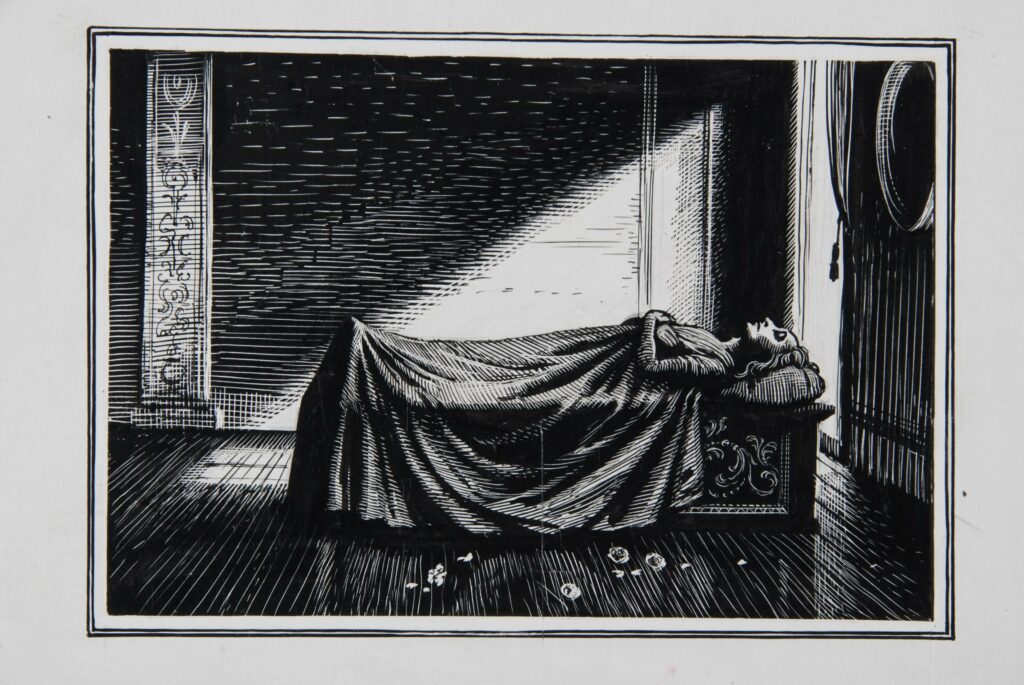When the war broke out, Whistler was 35 years old and eager to play a part. He was commissioned into the Welsh Guards as a second lieutenant in June 1940 and served in the Guards Armoured Division. His unit was sent to France at the end of June 1944, several weeks after the D-Day landings. He was killed in action in Normandy. As he climbed down from Sherlock’s tank, a mortar bomb exploded beside him, throwing him up into the air and breaking his neck.
Whistler trained at the University College London’s Slade School of Fine Art and painted murals, society portraits, designed theatrical sets, and book illustrations. The military appreciated this, and he continued some of his work, including a self-portrait in uniform held by the National Army Museum.
During the war, he was the burial officer of his regiment, and his soldiers became somewhat suspicious of the 20 crosses he carried on his tank. He decided that just because he was at war, it did not mean he could not paint, and therefore he also carried a bucket handing off the side of his tank for his paintbrushes.
Just days before he was killed, he remarked to a friend that he wanted to be buried where he fell, not in a military cemetery. His body now lies in Banneville-la-Campagne War Cemetery. The Times received more letters about Whistler’s death than any other war victim.




